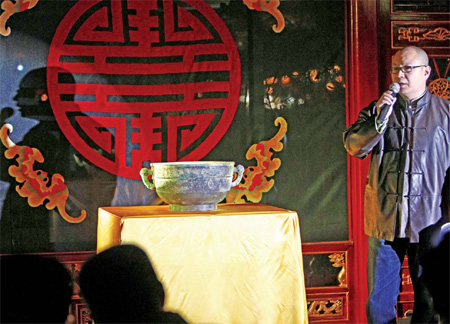Focus
For investors, glamorous bounty lies in looted treasures
By Cheng Yingqi (China Daily)
Updated: 2010-12-15 08:01
 |
Large Medium Small |
Break from tradition
Mainlanders are now leading the market for Chinese relics, with the majority of buyers from banking, manufacturing and real estate backgrounds, say industry experts.
Although there is no reliable figure on the number of collectors, it is believed their ranks have steadily swelled in the last two years.
"Traditional buyers of Chinese art were from Hong Kong, Taiwan and the US until 1999, with a few people from Chaozhou (an ancient city in Guangdong province) and Shanghai," said Nicolas K.S. Chow, vice-chairman of Sotheby's Asia and international director of Chinese ceramics and artwork.
"This spring, more than 50 percent of buyers at our Hong Kong auctions were from the mainland," he said. "Add the Hong Kong dealers acting on behalf of (mainland) buyers and it's fair to say mainlanders took up 70- to 80-percent (at auctions) in the past year."
Statistics released by Christie's, another global auction house, show the spending of mainland buyers grew 94 percent in 2009.
However, as many investors entering the market are laymen when it comes to antiques, professional agents are cashing in on the demand for their expertise and services.
Yang Yufeng, a specialist who founded Beijing's Zhilan Yaji art salon, said an agent can charge "millions of yuan" for successfully bidding on a rare treasure.
It was an agent negotiating for a mystery client on the phone who snapped up the 18th-century vase in November. Bainbridge's refused to reveal the name of the winner, although they confirmed he was from the Chinese mainland, probably Beijing.
The ornament, which was made during the Qing Dynasty (1644-1911) under the rule of Emperor Qianlong, is hollow and contains a smaller vase inside that turns independently.
